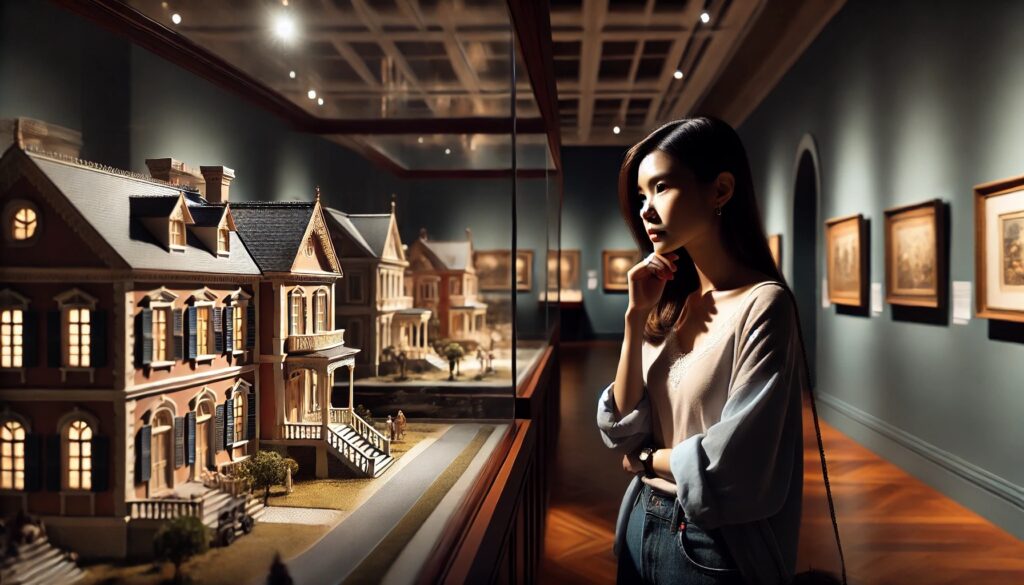ChatGPT:The historical “DollHouse” in the Rijksmuseum, particularly the one belonging to Petronella Oortman, is a remarkable example of the detailed and luxurious miniature houses that were popular among the wealthy in the 17th century. These dollhouses were not toys but rather elaborate and expensive displays showcasing the owner’s wealth and taste.
Petronella Oortman’s dollhouse, created between 1686 and 1710, is a cabinet-style house made of oak, veneered with tortoiseshell and decorated with pewter mounts. The house consists of nine rooms, each meticulously furnished with miniature furniture, household items, and decorations that mirror the real-life homes of the wealthy during that period. The rooms include a kitchen, a hall, a nursery, and bedrooms, all containing incredibly detailed and often handcrafted items such as tiny porcelain dishes, silverware, textiles, and even paintings.
These dollhouses served as a microcosm of 17th-century Dutch domestic life, reflecting contemporary interior design, household activities, and social customs. They were often used to display the owner’s collection of fine items and as a means of socializing and entertaining guests. The level of craftsmanship and detail in these houses provides valuable insights into the material culture and domestic environments of the Dutch Golden Age.
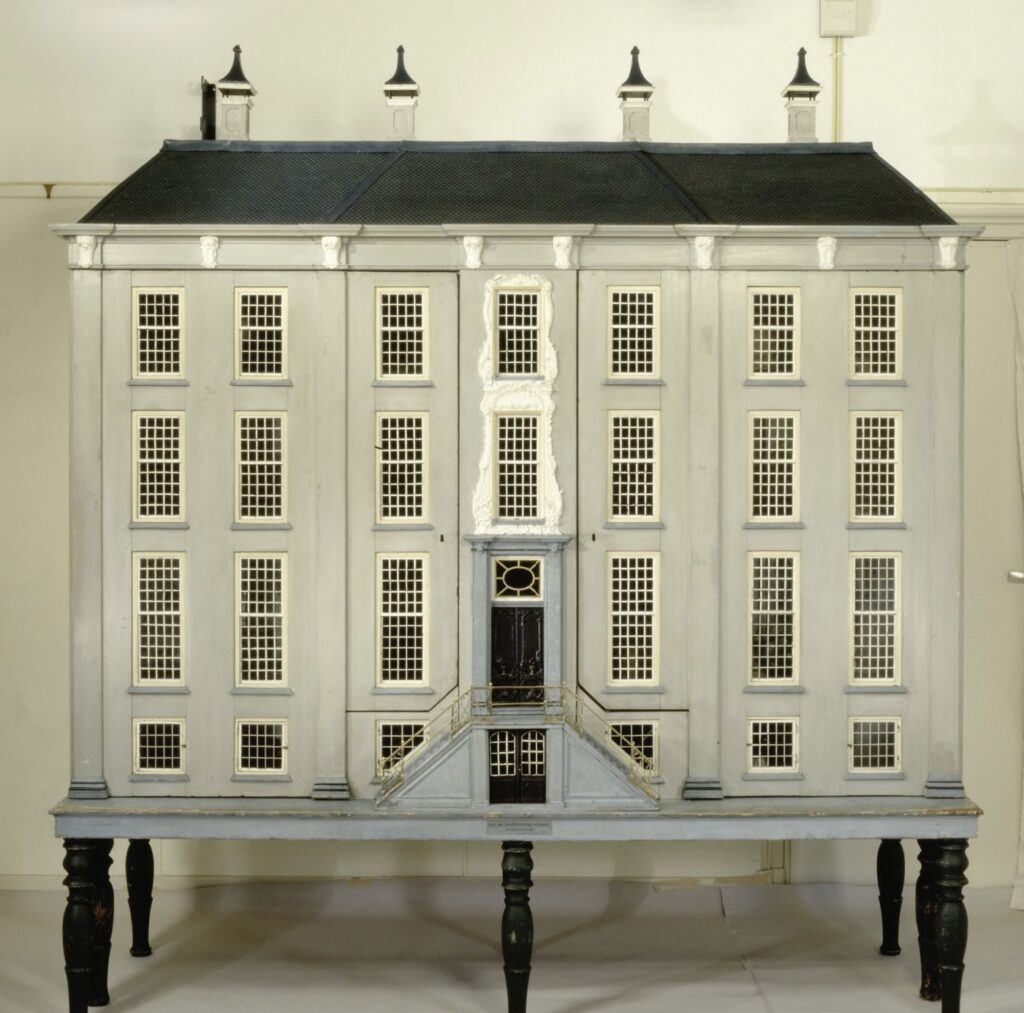
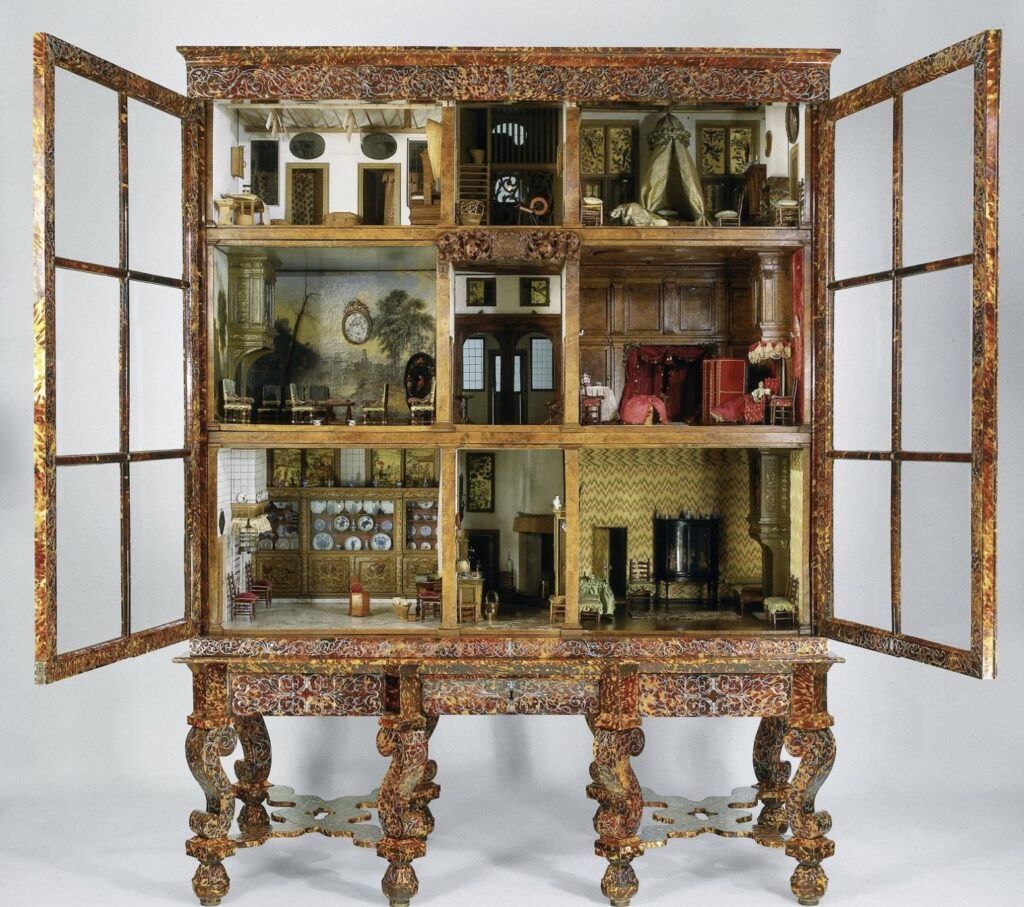
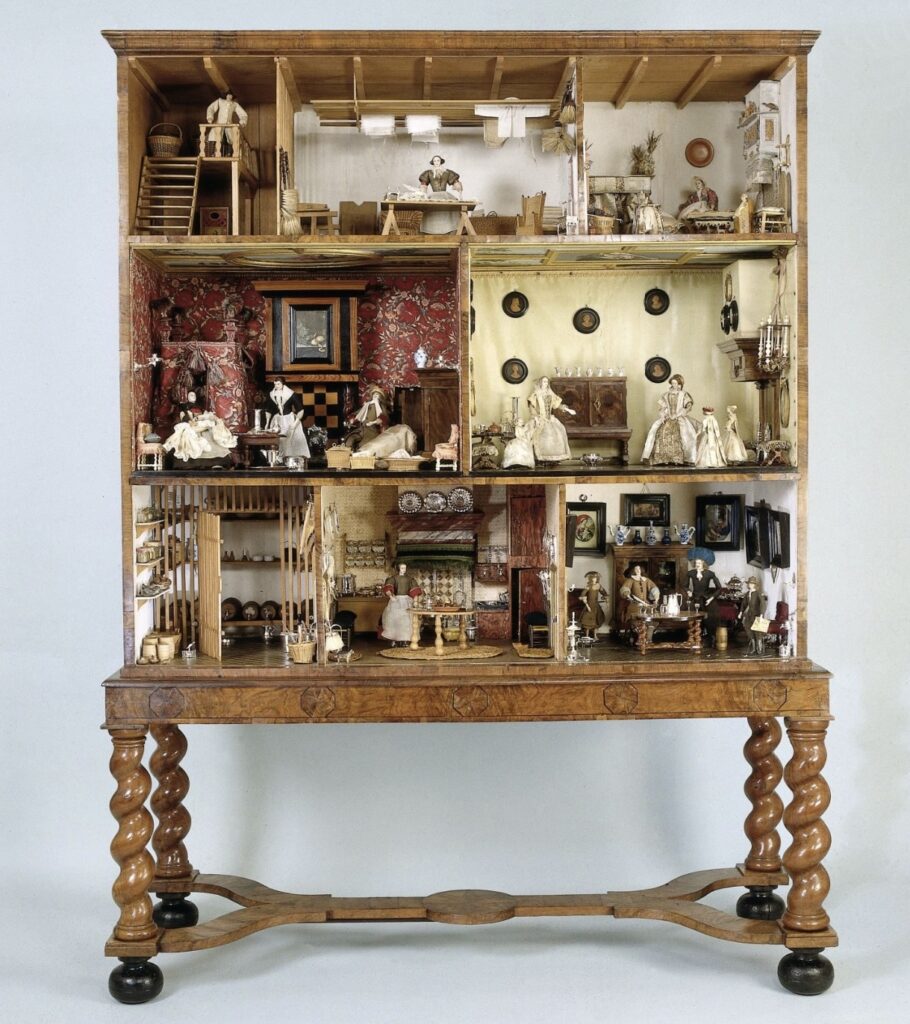
The British royal collections also feature several notable dollhouses, among which Queen Mary’s Dolls’ House is the most famous. Created between 1921 and 1924, it is an extraordinary example of craftsmanship and artistry, designed by the architect Sir Edwin Lutyens. This dollhouse was a gift to Queen Mary, the consort of King George V, and is now housed at Windsor Castle.
Queen Mary’s Dolls’ House is a 1:12 scale model and is remarkable for its accuracy and detail. It includes electric lighting, running water, and even functioning elevators. The house features a library filled with tiny books, some of which were written specifically for the dollhouse by renowned authors of the time, including Rudyard Kipling and Sir Arthur Conan Doyle. The wine cellar is stocked with miniature bottles of wine, complete with real wine inside.
Each room is meticulously decorated with miniature versions of contemporary furniture and household items, reflecting the styles and tastes of the early 20th century. The attention to detail extends to the miniature artworks, silverware, linens, and even the garden, which was designed by the famous garden designer Gertrude Jekyll.
Queen Mary’s Dolls’ House is not only a marvel of miniature craftsmanship but also a snapshot of the era’s domestic life, showcasing the luxury and sophistication of the British royal household. It remains a popular attraction for visitors to Windsor Castle, providing a fascinating glimpse into the past.
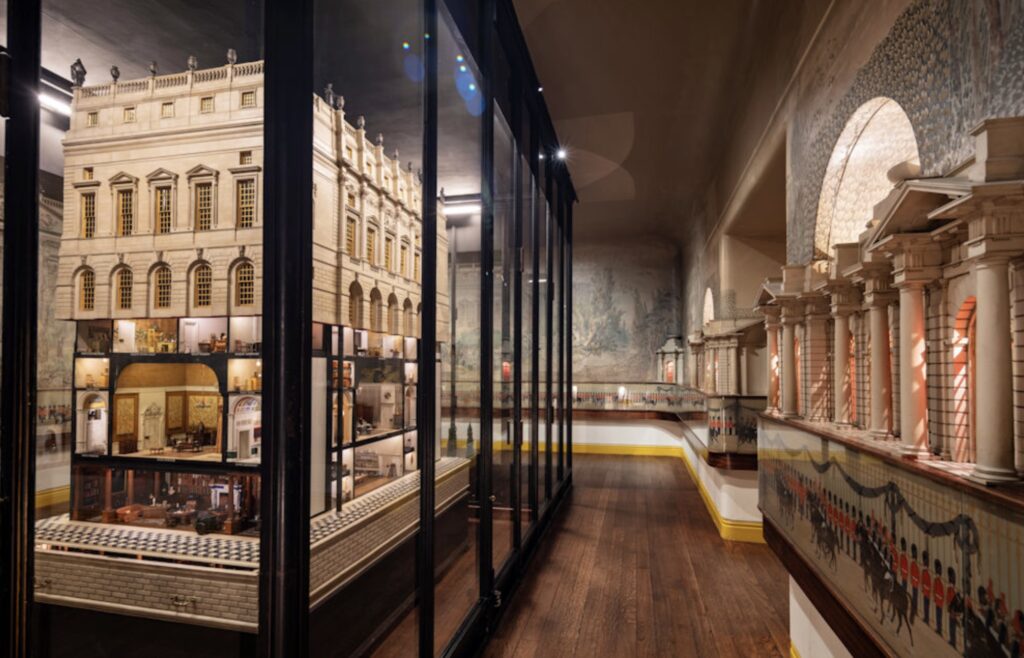
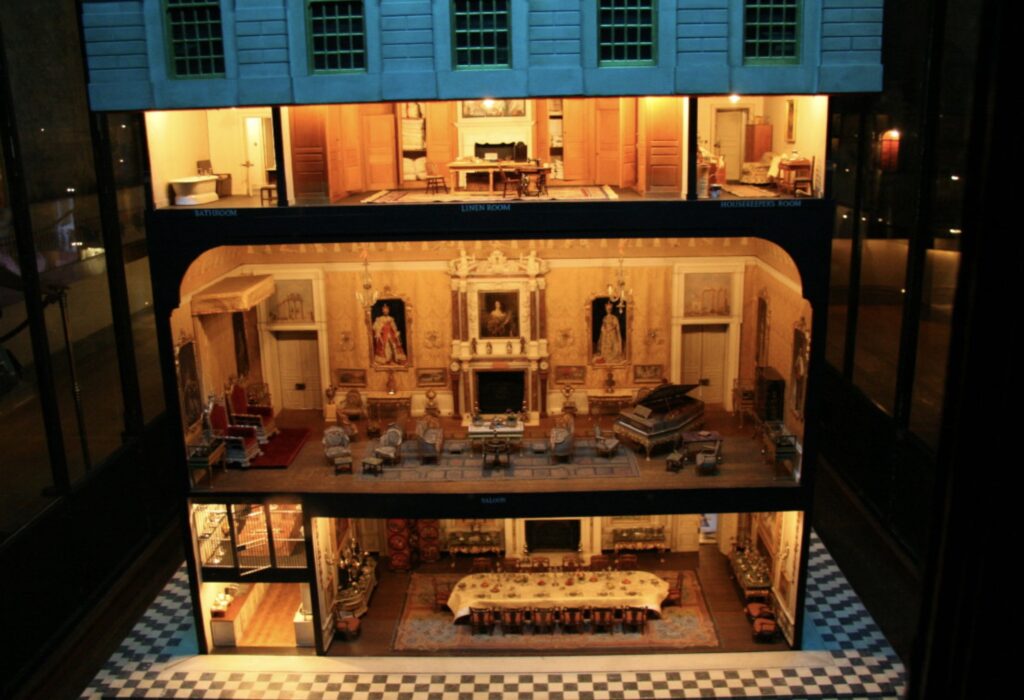
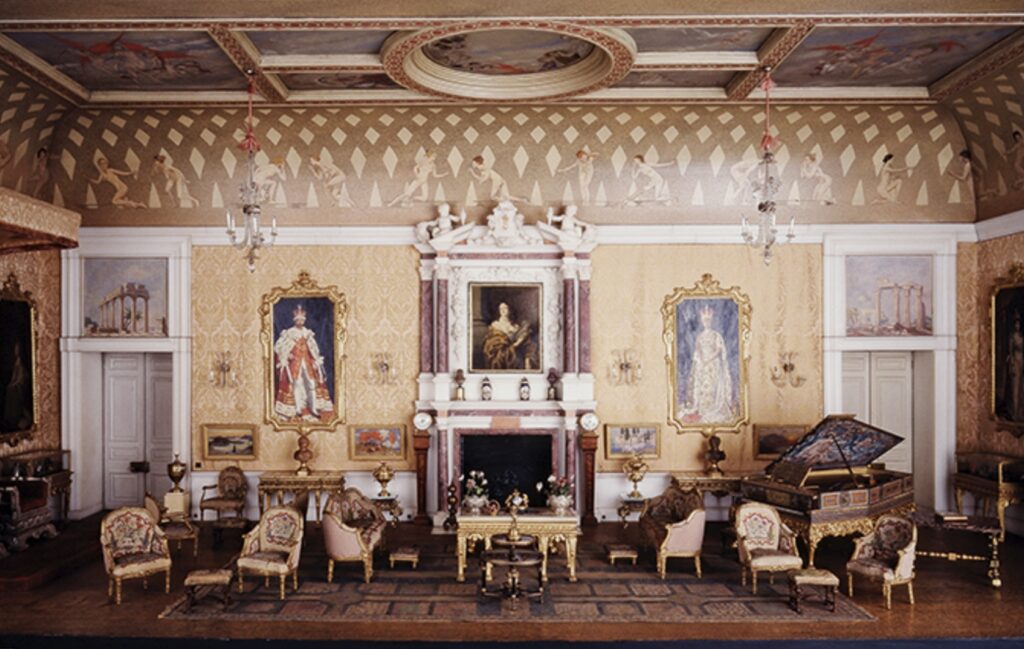
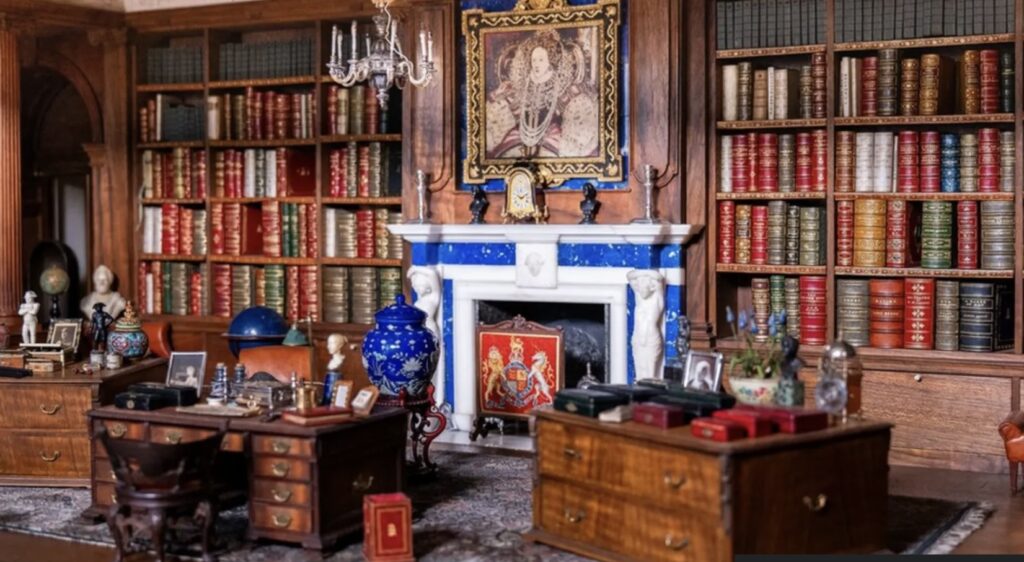
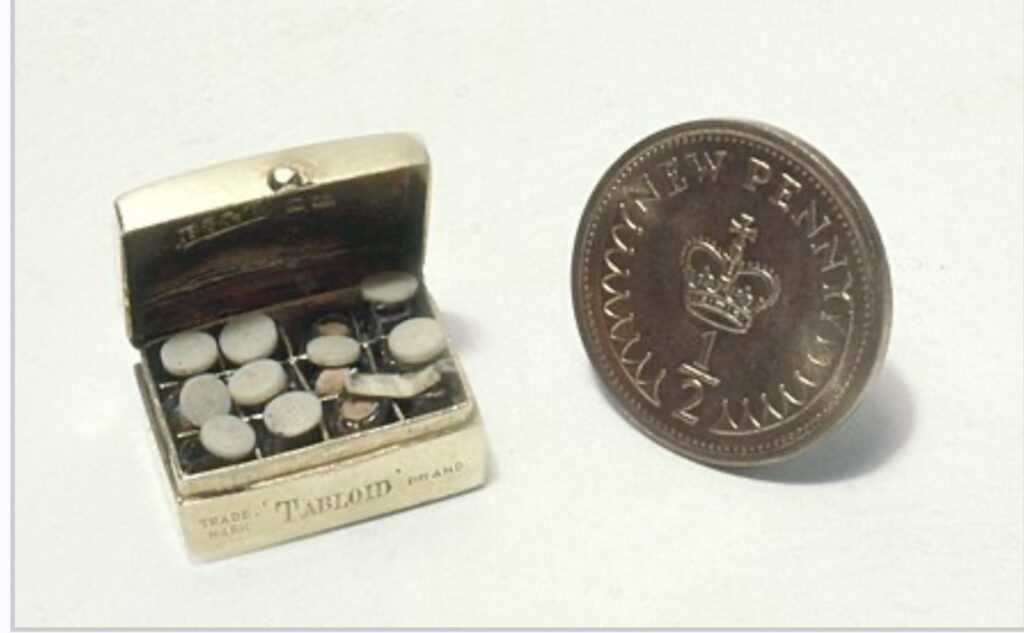
The UK is home to several other historical dollhouses of note. Here are a few prominent examples:
Tate Baby House:
Location: Victoria and Albert Museum, London.
Description: The Tate Baby House dates back to around 1760. It is one of the oldest and most complete examples of a baby house (an early term for a dollhouse) in the UK. This dollhouse is a Georgian-style cabinet with beautifully detailed interiors and furnishings. It features rooms such as a parlor, kitchen, and bedroom, all decorated with period-appropriate furniture and accessories.
Nuremberg House:
Location: Museum of Childhood, Edinburgh.
Description: This dollhouse, from the late 17th century, is a fine example of a German Nuremberg-style dollhouse. It showcases the typical Baroque interiors and intricate detailing of the period. The house includes several rooms, each furnished with miniature items reflecting the domestic life and social customs of the time.
Little Hurst House:
Location: Wilton House, Wiltshire.
Description: Little Hurst House is an early 19th-century dollhouse that reflects the Regency style. It features detailed interiors with elegant furnishings, textiles, and miniature accessories. The dollhouse provides a glimpse into the lifestyle and domestic arrangements of the Regency era.
Nettlestead Place Doll’s House:
Location: Maidstone Museum, Kent.
Description: This dollhouse dates back to the 18th century and is known for its elaborate Rococo-style interiors. The house is filled with intricate furniture and decorations, including chandeliers, mirrors, and ornate fireplaces, offering a detailed look at the opulence of the time.
Westbury Manor House Doll’s House:
Location: Hampshire Cultural Trust, Fareham.
Description: This dollhouse, created in the late 19th century, is a Victorian-style house complete with period furnishings and decorations. It features multiple rooms, each carefully decorated to reflect the Victorian era’s tastes and customs.
These dollhouses not only serve as fascinating historical artifacts but also provide valuable insights into the domestic life, architecture, and material culture of their respective periods.
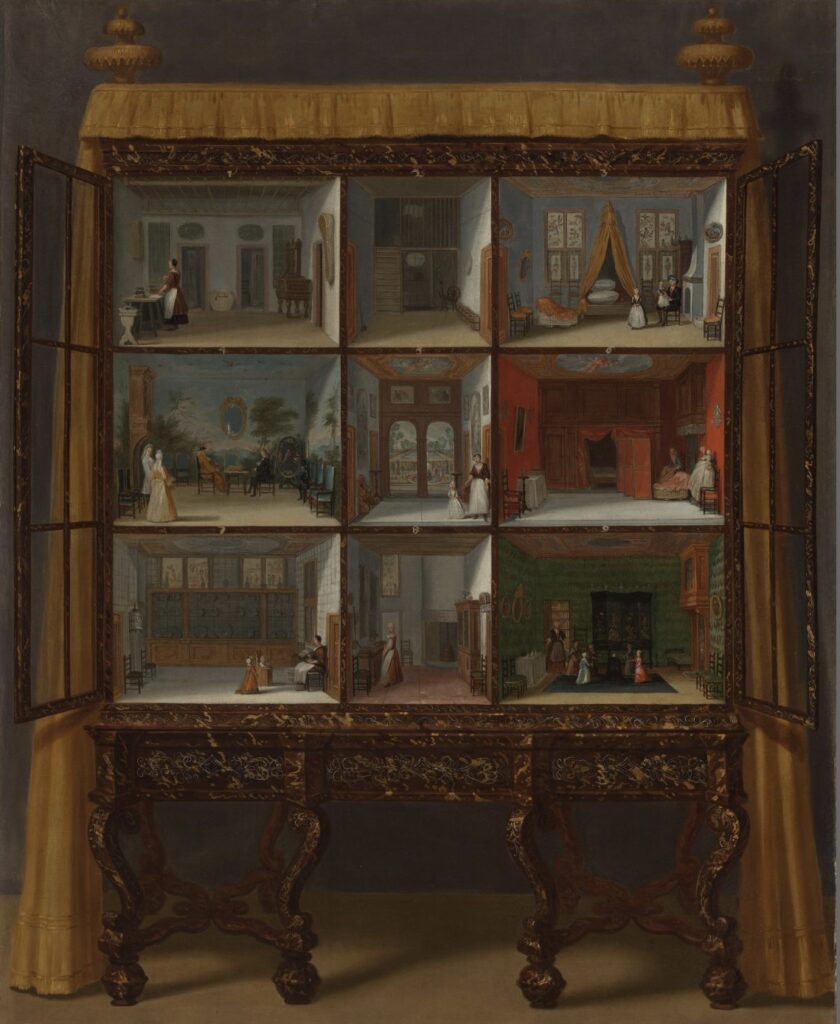
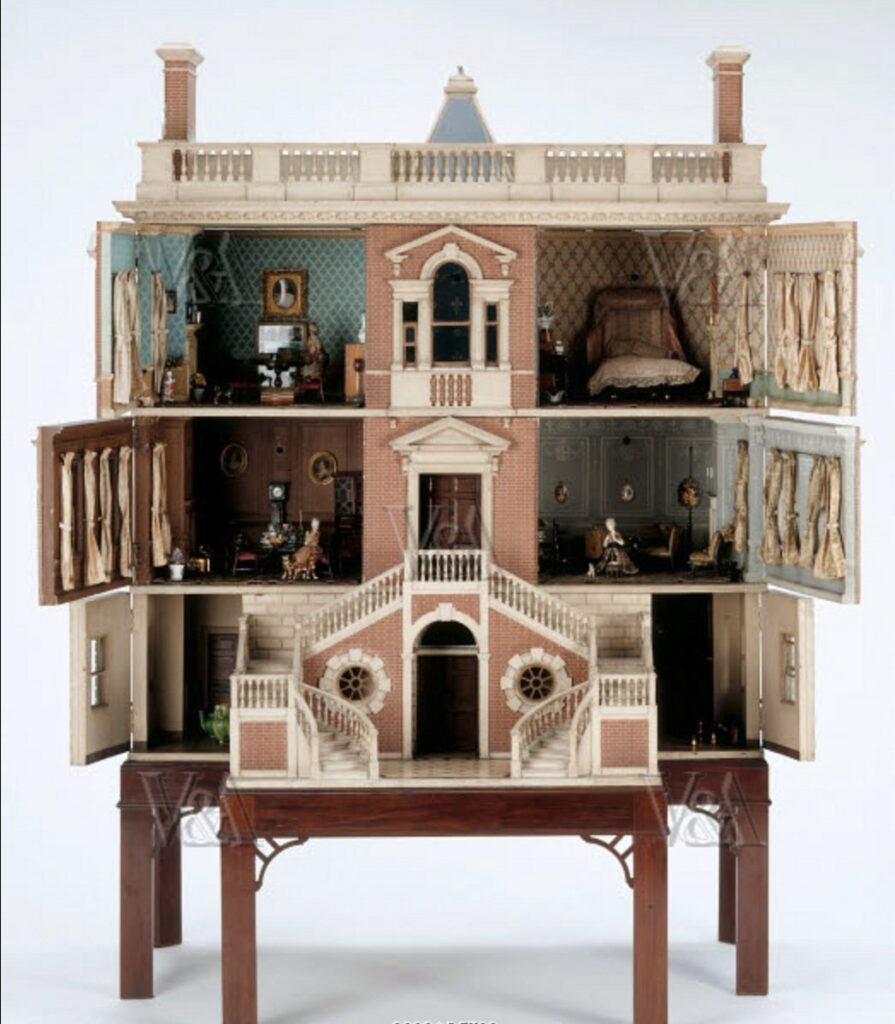
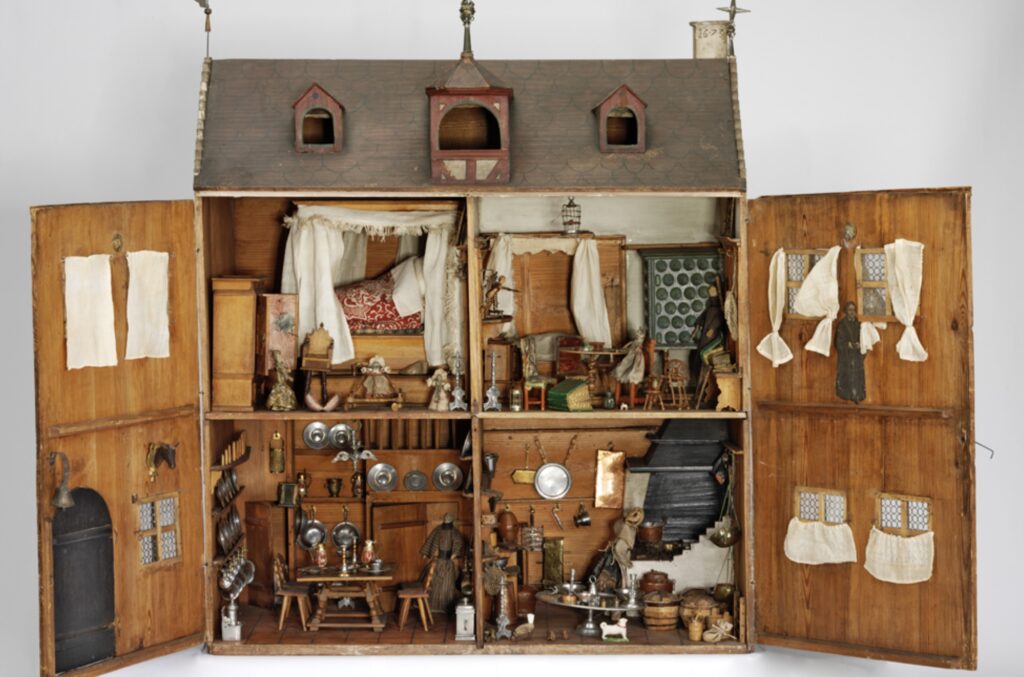
The furniture and household items in famous historical dollhouses were crafted with incredible attention to detail and artistry, reflecting the styles and craftsmanship of their respective periods. Here’s how these miniature items were typically made:
- Materials:
- The materials used for dollhouse furniture and household items were often the same as those used for full-sized counterparts. This included wood, metal, glass, porcelain, fabric, and even precious materials like silver and ivory. Craftsmen would work on a much smaller scale, but the quality of materials remained high.
- Craftsmanship:
- Skilled artisans, including carpenters, silversmiths, upholsterers, and painters, were often employed to create these miniature items. The level of craftsmanship was extraordinary, with many items being hand-carved, hand-painted, and hand-sewn. For instance, miniature chairs, tables, and cabinets were made with the same joinery techniques as full-sized furniture.
- Metalworkers produced tiny pieces of cutlery, cookware, and even chandeliers, using techniques such as casting and engraving.
- Decoration:
- Miniature items were often decorated with as much care as their larger counterparts. This included intricate painting, inlay work, and embroidery. For example, miniature paintings and tapestries were often created by skilled artists specifically for the dollhouses.
- Textiles, such as miniature rugs, curtains, and upholstery, were woven or sewn to scale, often with elaborate patterns and fine materials.
- Functionality:
- Many items in these dollhouses were functional, albeit on a miniature scale. For instance, doors and drawers in furniture would open and close, tiny clocks would work, and even plumbing systems were sometimes installed in more modern dollhouses like Queen Mary’s Dolls’ House.
- In Queen Mary’s Dolls’ House, the tiny books were real, with readable text and illustrations, and the wine bottles contained real wine.
- Special Commissions:
- Some items were specially commissioned from well-known craftsmen or companies. For example, Queen Mary’s Dolls’ House included miniature items from famous brands and artists of the time, ensuring that the miniature versions were as authentic and detailed as possible.
- Accuracy and Detail:
- The scale of the items was usually 1:12, meaning one inch in the dollhouse equated to one foot in real life. This scale allowed for detailed replication of full-sized items. Craftsmen paid meticulous attention to proportions, ensuring that every detail, no matter how small, was accurate.
These miniature items were not merely toys but rather artistic creations that reflected the tastes, fashions, and technological advancements of their times. Collectors and owners took great pride in their dollhouses, often showcasing them as symbols of status and culture.
The popularity of dollhouses among the aristocracy and royalty can be attributed to several factors:
- Status Symbol:
- Owning a dollhouse was a symbol of wealth and social status. These intricate miniatures were expensive and required skilled craftsmen to create, making them accessible primarily to the affluent. Displaying such a dollhouse demonstrated one’s financial power and refined taste.
- Artistic and Craftsmanship Appreciation:
- Aristocrats and royalty often had a deep appreciation for fine art and craftsmanship. Dollhouses, with their meticulously crafted furniture and detailed interiors, were seen as works of art. They reflected the owner’s patronage of skilled artisans and their commitment to preserving high-quality craftsmanship.
- Educational Tool:
- Dollhouses served as educational tools for young girls, teaching them about domestic management and household roles. For aristocratic children, they were a way to learn about the intricacies of running a grand household in a manageable, miniature format. This education was vital for young girls who would eventually manage large estates.
- Entertainment and Socializing:
- Dollhouses provided entertainment and were often used as conversation pieces during social gatherings. Guests could admire the detailed work, and hosts could discuss the origins and craftsmanship of the pieces. This made dollhouses a focal point for social interaction and entertainment.
- Collecting and Curating:
- Collecting miniature items for dollhouses became a hobby for many in the aristocracy. It was akin to curating a personal museum, with each item having its own story and significance. This collecting aspect allowed owners to continually add to and refine their dollhouses, keeping the interest alive over many years.
- Reflection of Personal Taste and Style:
- Dollhouses allowed owners to express their personal taste and style in a unique way. Just as they would decorate their actual homes, they could design and furnish their dollhouses to reflect their preferences in décor, fashion, and art. This personal touch made each dollhouse unique and a true reflection of its owner.
- Legacy and Heritage:
- For royalty and aristocrats, dollhouses were often passed down through generations, becoming cherished family heirlooms. They were a way to preserve family history and heritage, with each generation adding their own touches and continuing the tradition.
- Miniaturization Fascination:
- There was a fascination with miniaturization and the challenge of replicating everyday objects on a small scale. This interest in miniatures was part of a broader cultural trend that valued precision, detail, and the artistic challenge of creating something complex in miniature form.
These factors combined to make dollhouses a beloved and enduring pastime among the aristocracy and royalty, providing them with a unique way to display their wealth, taste, and cultural sophistication.
Dollhouse crafting remains popular today, though the reasons and the community have evolved over time. Here are some aspects of its continued popularity:
- Hobby and Collecting:
- Dollhouse crafting is a beloved hobby for many enthusiasts around the world. Collectors invest time and resources in acquiring, restoring, and customizing dollhouses and miniature items. This hobby spans all age groups, from children to adults.
- Artistic Expression:
- Modern crafters use dollhouses as a medium for artistic expression. The creation of miniature scenes and rooms allows for immense creativity in design, color, and detail. Artists often share their work in exhibitions, social media, and online communities.
- Therapeutic and Relaxation:
- Many people find working on dollhouses therapeutic. The meticulous and detailed nature of the craft can be calming and provide a sense of accomplishment. It’s an engaging activity that allows for deep focus and relaxation.
- Educational Value:
- Dollhouses are still used as educational tools, teaching children about architecture, history, interior design, and spatial relationships. Schools and museums sometimes incorporate dollhouses in their educational programs.
- Historical Reproduction and Preservation:
- Enthusiasts and historians use dollhouses to recreate historical settings and preserve architectural styles from different periods. This aspect of dollhouse crafting often involves extensive research to ensure historical accuracy.
- Customization and Personal Projects:
- With the advent of new materials and technologies, such as 3D printing, dollhouse enthusiasts can customize and create highly personalized miniature items. This customization allows for unique and bespoke creations that reflect personal interests and styles.
- Community and Social Aspect:
- There is a vibrant community of dollhouse crafters who connect through clubs, online forums, social media groups, and conventions. These communities provide support, share techniques, and celebrate each other’s work.
- Commercial Market:
- There is a thriving commercial market for dollhouse kits, miniature furniture, and accessories. Specialized shops, both physical and online, cater to the needs of hobbyists. Some artisans and small businesses create and sell handmade miniatures, contributing to the industry.
While the role of dollhouses has shifted from a symbol of aristocratic status to a widely enjoyed hobby, the passion for creating and collecting these intricate miniatures continues to thrive in contemporary times.
